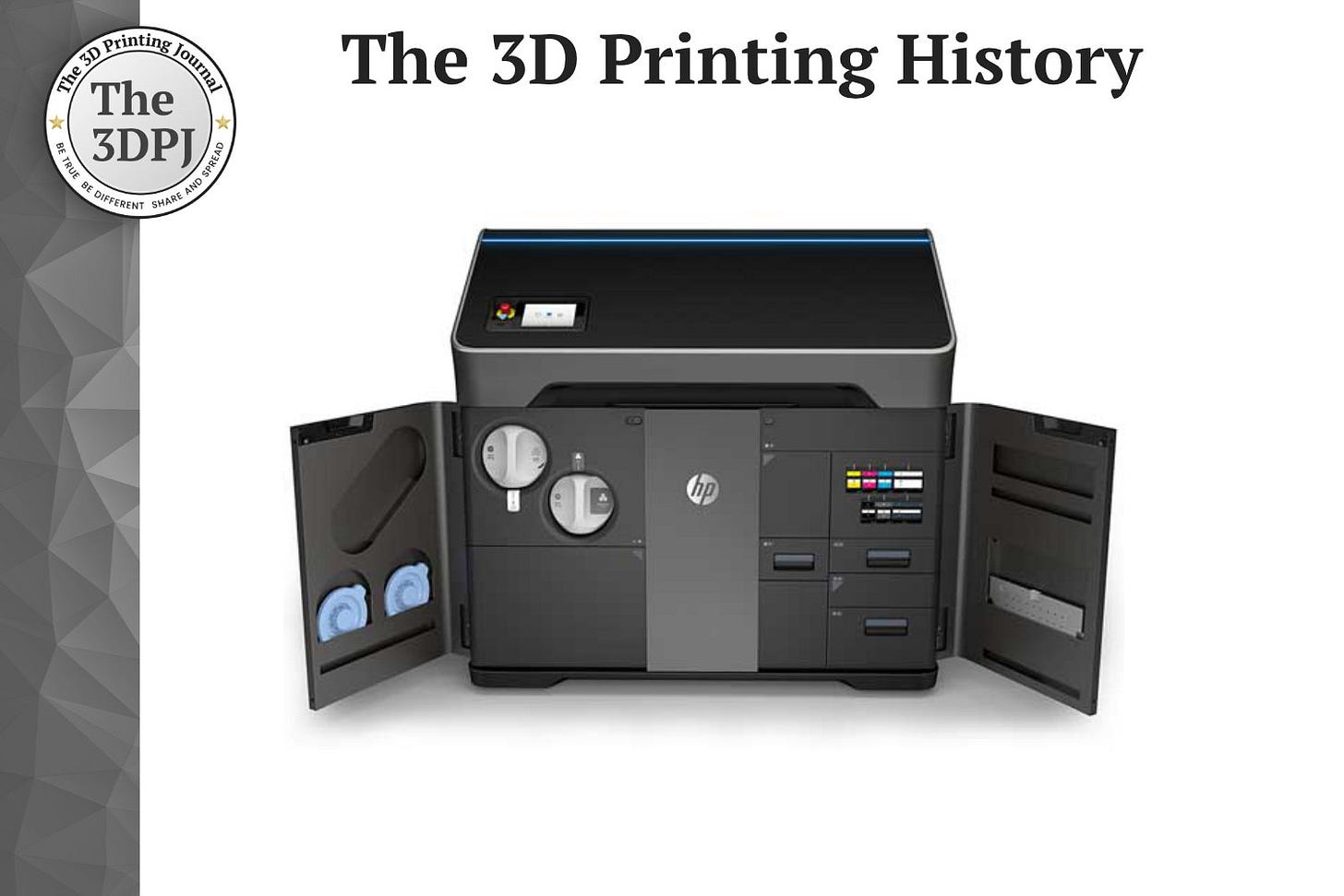02-05-2018: HP announced the launch of its first full-color MJF 3D printers
The company introduced four new systems: HP Jet Fusion 340 (B&W) / 380 (Color) & HP Jet Fusion 540 (B&W) / 580 (Color)
On February 5, 2018, during the SOLIDWORKS 2018 conference, HP unveiled four new 3D printing systems along with its strategy for the upcoming months and years. Among them were the first two machines capable of printing in full color: the HP Jet Fusion 380 and HP Jet Fusion 580. At the same time, the company announced a strategic partnership with Dassault Systèmes to develop software for its new machines.
Back in the fall of 2014, when HP first introduced its 3D printer based on the innovative Multi Jet Fusion technology, it claimed to be building on two pillars that would revolutionize the 3D printing industry. The first was an unparalleled printing speed for powdered thermoplastics, and the second was the ability to produce full-color parts. This was a groundbreaking statement, as no other company at the time could deliver full-color plastic 3D prints.
However, as it soon turned out, HP wasn't able to either—at least not as quickly as initially expected. The actual launch of HP’s first 3D printing systems, the HP Jet Fusion 3D 3200 and HP Jet Fusion 3D 4200, took exactly 566 days, and when they finally arrived, they only printed in monochrome—either black or white.
At Formnext 2017 in Frankfurt, HP gave a glimpse of what was to come in the near future—its first full-color prints and metal 3D printing. But it wasn't until February 2018 that these full-color systems officially hit the market.
The 3D printers differed in build volume, available color options, and, of course, price. Jet Fusion 340 (20 x 28 x 27 cm) and Jet Fusion 540 (20 x 35 x 27 cm) were monochrome, while Jet Fusion 380 (20 x 28 x 27 cm) and Jet Fusion 580 (20 x 35 x 27 cm) were full-color.
There were also changes in 3D printing materials. With the new systems, HP introduced HP 3D High Reusability CB PA 12, a polyamide with mechanical properties similar to existing materials. Additionally, thanks to the ability of the Jet Fusion 380 and 580 to apply up to eight different agents (e.g., a full CMYK palette + white), HP envisioned a future where prints (or parts of them) could be made UV-sensitive, more flexible or rigid, or even electrically conductive.
Unfortunately, much of this vision never fully materialized. While full-color MJF technology largely delivered on its promises, it turned out to be extremely expensive to operate. Simply put—despite being marketed as a production system, the cost of parts remained prohibitively high, making it more suitable for prototyping than mass production. As a result, after the pandemic, HP quietly discontinued its full-color systems.
Different sources offer different explanations for this decision. Some cite a lack of profitability, others blame internal restructuring at HP (where the American HP 3D division suffered the consequences), and others point to internal conflicts and corporate politics that led to one faction (the black-and-white one) winning out.
Regardless, for now, full-color MJF 3D printing is history. At least colorful one.
Source: www.hp.com



